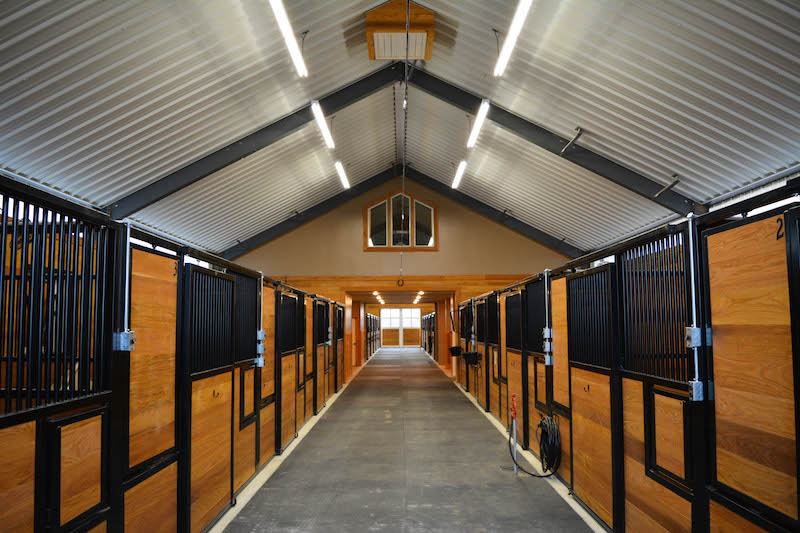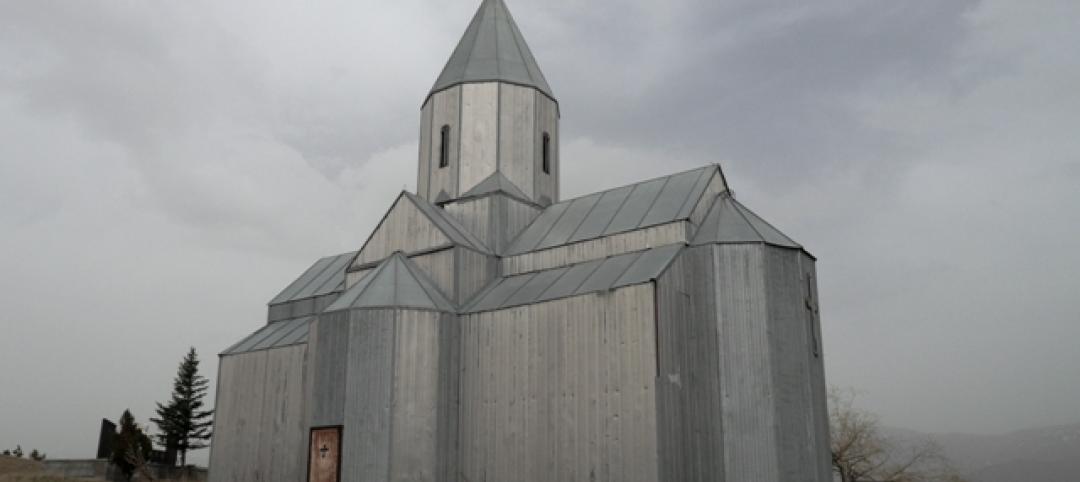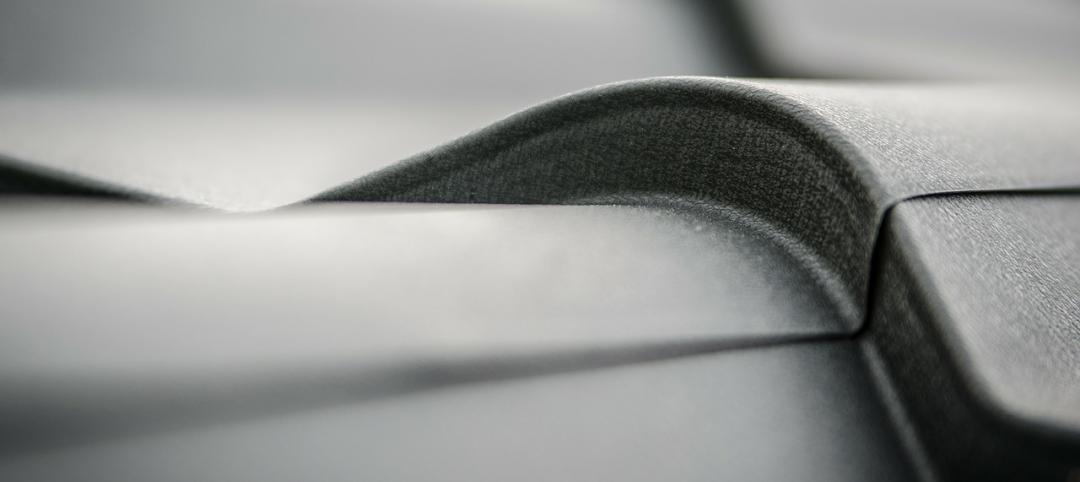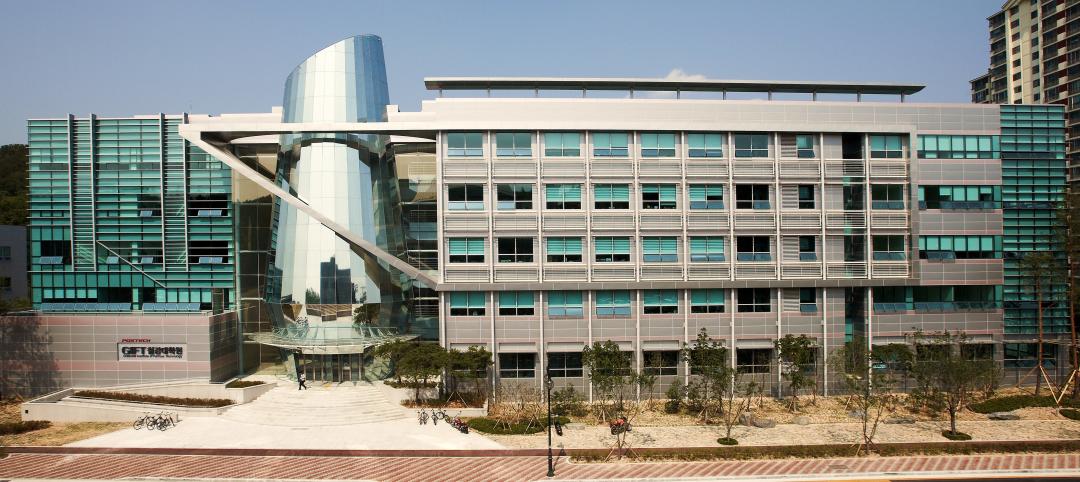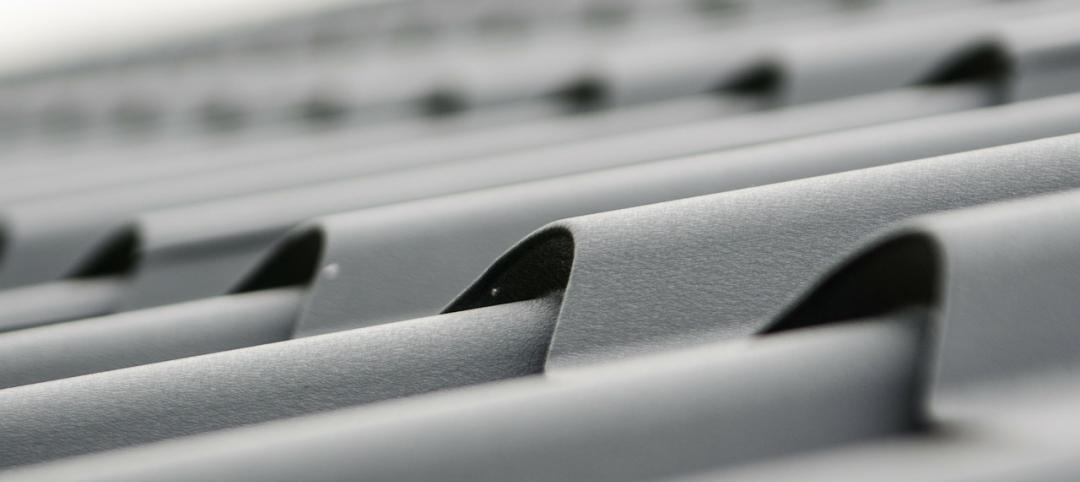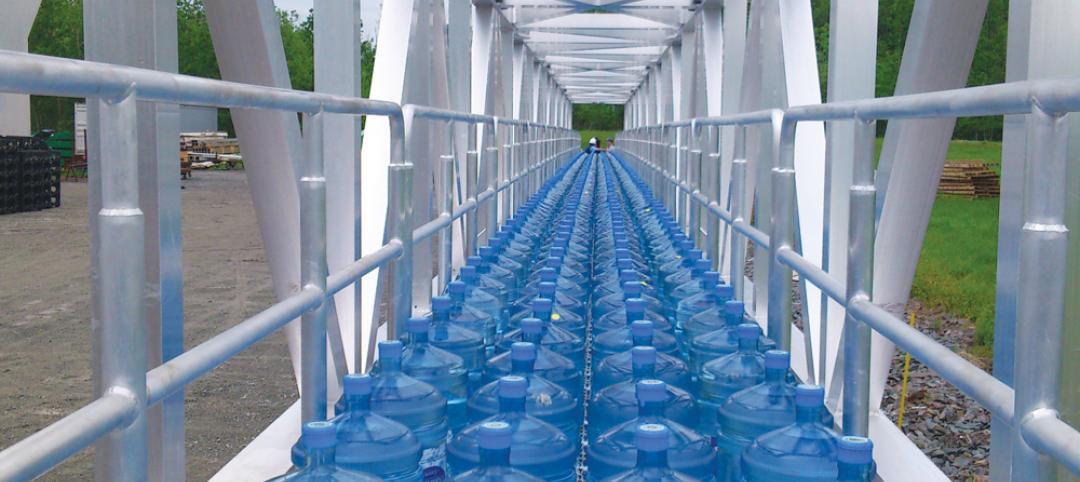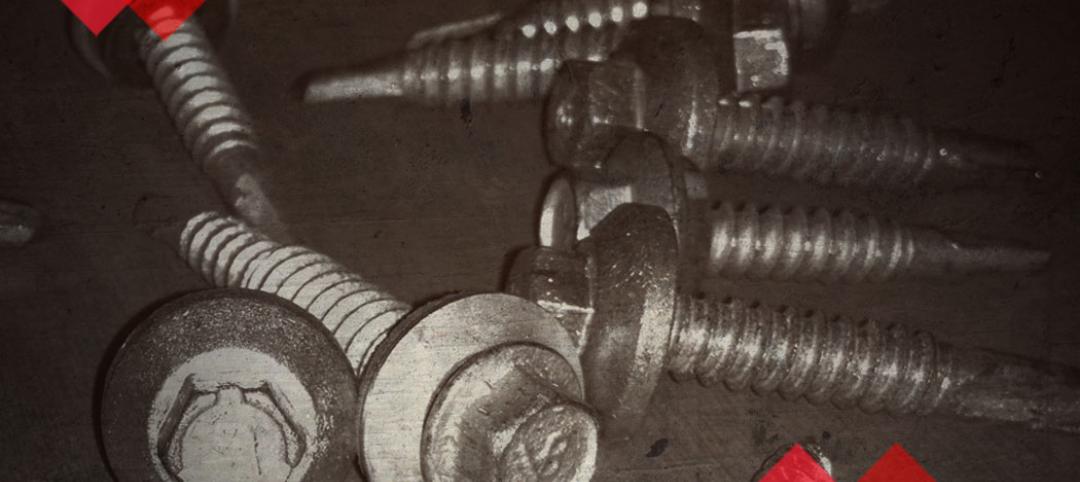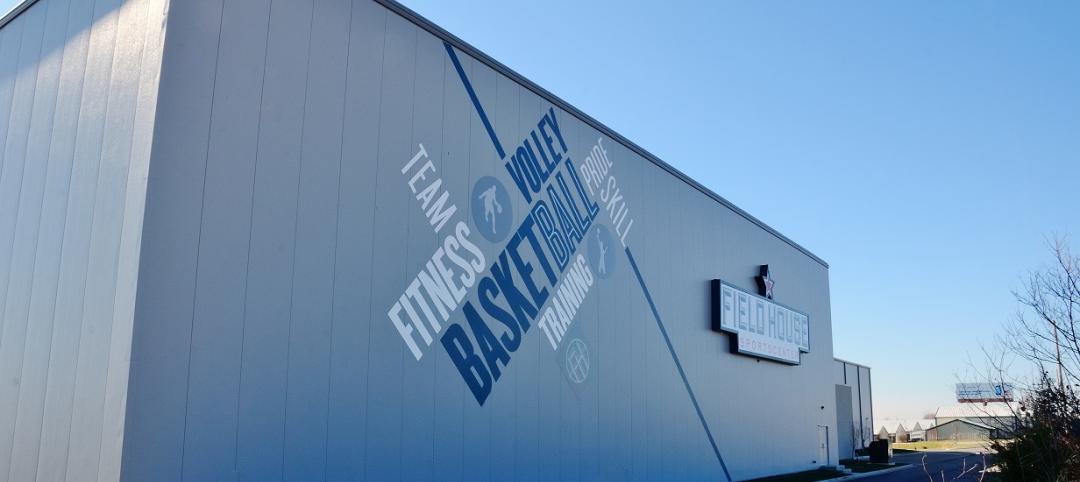Cobalt Stables was the kind of project that contractors dream of, where the client wants to build the best facility of its kind, has the budget to do it, and has faith in the contractor to let him express his craft and creativity. The facility in question is an unusual combination of horse stables and training facilities with a comfy human residence, all together under one roof. It presented the best kind of challenges to Star builder Weigel Construction, testing their construction skills at marrying different building usages and different construction materials into a unified whole, and their contractor’s expertise at satisfying the codes for two different types of occupancies under a single roof. The dream came to life by joining together four Star metal buildings and adding a whole lot of TLC. The project was such an elegant success that it was selected by Star builders across the country to receive the 2016 Builder’s Choice Master Builder Award.
Cobalt Stables was built to train Morgan horses in the best possible environment. “This wasn’t the kind of hard-bid job where they’re only looking at bottom line cost,” explains Weigel Construction owner Joe Weigel. “That wasn’t what this project was about. It was about trying to create a facility that was second to none in this local area. We all looked at this and said, it’s a non-typical project that you can put on your belt and show people. So everybody, all our people and the subcontractors, they all treated it as though it was their own. We thought it out before we built it and paid attention to every detail.”

The facility is made of one large, clear-span metal building, with three smaller buildings attached in the form of a cross. Front-and-center is the living quarters, 36’ x 71’ metal building frame with two-story wood framing construction inside it, a full 5,000 sf of living space. Extending seamlessly to the left and right of the living quarters are two 2,160 sf structures that appear to be wings of the house, but are in fact stables and associated horse-space. Behind all of it is a 16,000 sf indoor equestrian arena, an 80-foot wide clear span building with high ceilings.
The exterior walls of the three front elements all feature wood rough carpentry infill for the first ten feet up from the slab. Above that level, it’s more typical metal construction. These three buildings feature an exterior skin of Star PBR metal panels, attached to both wood framing lower down and steel purlins higher up. The interior of the stables is finished solid red oak tongue-and-groove panels. It’s topped off by a composition shingle roof.
“Integrating wood and steel structures,” Joe Wiegl points out, “requires coordinating things you normally don’t deal with. It goes all the way down to having the right type of fastener going from wood into steel. You can’t just use a generic fastener that’s usually used wood-to-wood or steel-to-steel. Using two types of materials was definitely a challenge.”
The arena section is more typical metal building construction, with steel purlins throughout supporting PBR walls and roof panels.

Perhaps the most unusual aspect of the project was the different types of occupancies being joined together. “As far as the living quarters vs. the stables, you’re dealing with completely different environments. The living quarters is a conditioned area that you want to be quiet, and right outside of that are potentially 20 live horses. The horses are creating their own heat load in a non-conditioned area in the stables. You’re dealing with a much different scenario from one wall to the next. There’s also an occupancy separation in terms of building codes, with a fire wall separating the two areas.”
A great deal of attention was paid to the questions of insulation and maintaining comfortable occupancy temperatures. In the living quarters and stables, spray foam insulation fills the wall cavities, a Star liner panel insulates the roof, and all the floor slabs were built with radiant heating. The arena building, by contrast, is un-insulated, but has a series of two-inch gas pipe radiant heaters that run down the long sides of the arena a few feet below the ceiling.

Ground was broken in Feb. 2016, with considerable sitework being necessary. The project was completed at the beginning of December 2016. After six months of operation, there have been no issues with any of the installations. The owner is happy.
“We’ve been doing this a long time,” observes Weigel. “We know what looks good and what doesn’t. When an owner lets you do what you know, from a contractor’s standpoint, you’re blessed with a project you can be proud of.”
Related Stories
Sponsored | Metals | Feb 25, 2015
Why churches are being built of metal
Affordability and speed of building are important factors.
Sponsored | Energy Efficient Roofing | Feb 12, 2015
How does airflow under a metal roof further enhance energy savings?
Metal roof coatings with solar reflectance can help building owners save substantially in annual cooling costs. Research has confirmed that creating an air space under a metal roofing system will increase energy savings during both summer and winter months.
Sponsored | Roofing | Feb 11, 2015
New school blends with local architecture using Petersen metal roof
Perkins Eastman in Stamford, Conn., designed the school to emphasize and integrate the International Baccalaureate curriculum throughout.
Steel Buildings | Feb 10, 2015
Korean researchers discover 'super steel'
The new alloy makes steel as strong as titanium.
Sponsored | Metals | Jan 30, 2015
Want greater energy savings? The answer is right above you
A recent study finds that metal roofs can cut energy costs.
Sponsored | School Construction | Jan 23, 2015
How Metal Buildings Deliver Long-term Value to Schools
| Dec 29, 2014
High-strength aluminum footbridge designed to withstand deep-ocean movement, high wind speeds [BD+C's 2014 Great Solutions Report]
The metal’s flexibility makes the difference in an oil rig footbridge connecting platforms in the West Philippine Sea. The design solution was named a 2014 Great Solution by the editors of Building Design+Construction.
Sponsored | | Nov 19, 2014
3 technology trends on the horizon
As technology continues to evolve exponentially, construction firms have ongoing opportunities to enhance the quality, speed, and efficiency of building projects and processes. SPONSORED CONTENT
Sponsored | | Nov 19, 2014
Long-life coatings vs. long-life screws
Are you concerned with the long-life protection of your metal building project? SPONSORED CONTENT
Sponsored | | Nov 5, 2014
Welcome to sports central
The Fieldhouse Sportscenter in Springfield, Mo., serves as a community center for basketball and volleyball leagues and tournaments.


